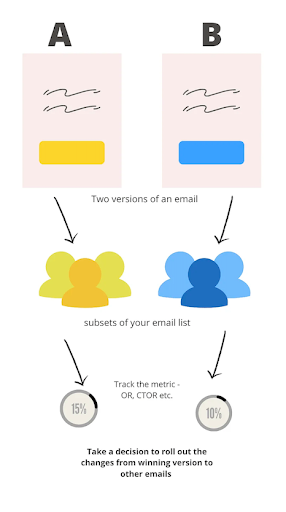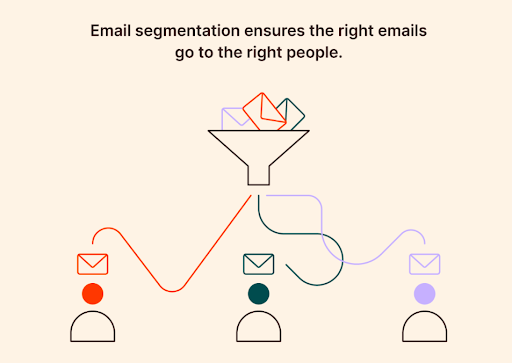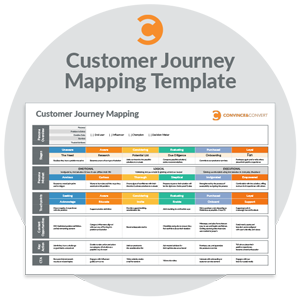In today’s rapidly evolving healthcare landscape, patients and caregivers are seeking more personalized and responsive care experiences.
The pressure on healthcare providers to meet these expectations is mounting, and traditional methods are no longer sufficient.
If you’ve found yourself searching for ways to enhance the healthcare customer journey, you’re not alone.
Integrating email and marketing automation offers a dynamic solution to this challenge.
By creating a seamless pathway from initial engagement to ongoing communication, healthcare professionals can foster better relationships with their clients and improve overall satisfaction.
This blog will explore the strategies, tips, and best practices to build a customer journey that reflects the needs and desires of the modern healthcare consumer.
Whether you’re a healthcare provider, marketer, or interested in the intersection of healthcare and technology, this information is tailored to provide actionable insights for enhancing patient experience via email and marketing automation.
The Need to Build a Seamless Healthcare Customer Journey
Building a seamless healthcare customer journey is essential for many reasons. It helps in delivering personalized, convenient, and efficient healthcare services that can significantly impact the overall patient experience and outcomes.
- Email and marketing automation allows healthcare providers to send targeted and personalized messages. This means patients receive relevant information, reminders, and support tailored to their specific conditions, treatments, or health goals, enhancing their overall experience.
- A well-integrated healthcare customer journey ensures that patients receive the right care at the right time. It fosters better communication between healthcare providers, reduces delays in treatment, and improves adherence to treatment plans, contributing to better overall health outcomes.
- Through email and marketing automation, healthcare providers can offer convenient online services such as appointment scheduling, telemedicine consultations, or accessing test results. This makes the healthcare journey more accessible and user-friendly.
1. Regular Feedback Mechanisms
The integration of regular feedback mechanisms results in a more responsive and adaptive communication strategy.
To continuously improve, it’s essential to know what’s working and what isn’t. Integrating regular feedback mechanisms into your email campaigns can provide invaluable insights.
Consider embedding short surveys or feedback forms within your emails. Ask recipients about the relevance of content, frequency of communication, and any other aspects you wish to improve upon.
Apart from this, you can generate a QR code and include it in your email templates to share with customers. This will help your customers to share their feedback quickly by easily accessing surveys through scanning QR codes.
This not only provides direct feedback but also shows recipients that their opinions and preferences matter. Over time, this can lead to more tailored and effective communication, fostering stronger connections with your audience.
Showing recipients that their opinions and preferences matter by asking for their feedback strengthens connections and fosters a sense of community and partnership. It can enhance patient loyalty, trust, and satisfaction.
As patients feel more connected and heard, they are more likely to engage with the content, follow through on calls to action, and become advocates for your brand.
2 A/B Testing in Emails & on Website
The world of email marketing is vast, and even seasoned marketers can’t always predict what will resonate best with their audience. This is where A/B testing comes into play.
By creating two variations of an email and sending them to a small subset of your audience, you gain valuable insights into their preferences.

Source: Sendx.io
It could be as simple as testing different subject lines or as complex as varying content layouts.
Healthcare providers often rely on their websites to provide information about services, book appointments, and offer patient support.
A/B testing various elements of the website, such as layout, navigation, and content, can lead to a more user-friendly experience, ultimately improving the patient journey.
By A/B testing different reminder methods or support programs, you can find the most effective approach to ensure that patients follow their treatment plans.
Educating patients is a critical aspect of healthcare, and A/B testing different formats or content for educational materials can help healthcare providers discover what is most effective in conveying crucial information to diverse patient groups.
By applying A/B testing in these and other areas, healthcare providers can:
- Increase Engagement: Understand what patients want and need, leading to more meaningful interactions and higher engagement.
- Improve Satisfaction: Tailor experiences to individual preferences, improving overall patient satisfaction.
- Enhance Efficiency: Optimize processes, interfaces, and communications, leading to smoother patient journeys and potentially reduced costs.
- Boost Outcomes: Personalized interventions and education can contribute to better health outcomes by ensuring that patients are fully informed and engaged in their care.
3 Leverage Data Analytics
Beyond the content of the email, understanding recipient behavior can be a goldmine of insights. Utilizing data analytics tools can give you a deeper look into metrics like open rates, click-through rates, and even the times when recipients are most active.
By analyzing these patterns, you can adjust your campaigns to better align with your audience’s behavior. For instance, if a particular topic garners higher engagement, it might be worth creating a series around it.
Alternatively, if you notice most emails are opened during lunch hours, consider scheduling your sends around that time for maximum visibility.
- By analyzing patient data, healthcare providers can segment their audience into different categories based on demographics, medical history, preferences, or behavior. And then they can send targeted emails or campaigns. For example, a campaign for geriatrics health would not be relevant for someone with a newborn baby and vice-versa.

- Anticipating Needs: Predictive analytics can help identify patterns in patient behavior and needs. This can help in sending proactive email communications or targeted marketing messages before a patient even recognizes a need.
- Preventive Health Programs: Predictive models can also identify patients at risk for certain health conditions, enabling healthcare providers to initiate preventive measures through targeted email campaigns.
Leveraging data analytics in email and marketing automation enables healthcare providers to create a seamless and personalized healthcare customer experience.
This approach not only enhances patient satisfaction but also has the potential to improve health outcomes by ensuring that patients are informed, engaged, and proactive in their healthcare journey.
4 Relevant Content
Automation allows for timely delivery of content, which can be crucial in healthcare. Whether it’s appointment reminders, follow-up care instructions, or critical health alerts, automation ensures that these communications are sent precisely when needed. It also enables healthcare providers to react quickly to patient behavior or feedback.
For example, if a patient opens an email about a particular treatment, automation can trigger a follow-up email with more detailed information or a special offer.
This responsiveness not only enhances the efficiency of communication but also makes patients feel heard and cared for, improving their overall satisfaction and trust in the healthcare provider.
Email can also serve as a platform for continuous education and support. Through targeted campaigns, healthcare providers can send informational content that empowers patients to manage their health more proactively.
This might include tips on managing chronic conditions, preventive care advice, or links to supportive communities.
By continuously providing valuable content that educates and supports, healthcare providers can foster a more informed and self-reliant patient community.
This ongoing engagement contributes to better health outcomes, as patients are more likely to adhere to treatment plans and take preventive measures when they feel informed and supported.
In essence, the integration of content in email and marketing automation transcends mere information dissemination.
It turns email into a dynamic tool for personalized communication, timely response, and continuous patient education and support, contributing to a seamless and meaningful healthcare customer journey.
Final Thoughts
Building a seamless healthcare customer journey is no longer a futuristic concept, but a vital necessity in today’s healthcare landscape.
Integrating email and marketing automation is key to achieving this goal, making healthcare more personalized, efficient, and engaging.
As you move forward with personalizing patient experiences, always consider the ethical handling of patient data. Transparency, security, and compliance with regulations should be at the forefront of all strategies.

